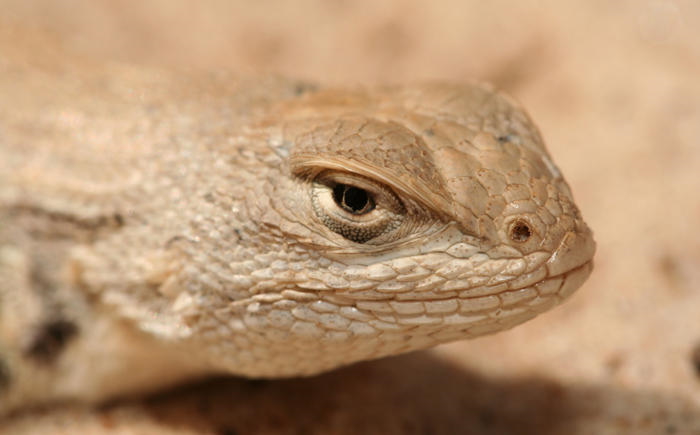
Dunes sagebrush lizard
By Melissa Gaskill
Texas Climate News
Recent changes to Endangered Species Act regulations could prove disastrous for at least one Texas species, the dunes sagebrush lizard, and may put others at increased risk.
The lizard has been at the center of a protracted battle between conservationists and the oil and gas industry in West Texas and New Mexico.
On Aug. 12, the U.S. Fish and Wildlife Service and National Marine Fisheries Service jointly announced revisions to Endangered Species Act regulations. Those two agencies administer the act. The changes apply to ESA sections that deal with adding or removing species from the lists of protected species and consultations with other federal agencies.
The act directs that the decision to list or delist a species as threatened or endangered be based solely on the best available scientific and commercial information, and the new regulations retain that language.
However, while the rules still prohibit the agencies from considering the economic impact in listing decisions (which would violate the ESA), the changes allow them to evaluate the economic impacts of listing and to publish that information. The final rule states “[T]he act does not prohibit the services from compiling economic information or presenting that information to the public, as long as such information does not influence the listing determination.”
Chris Nogano at the Arizona-based Center for Biological Diversity (CBD), a non-governmental group that works to protect threatened species, told Texas Climate News this change adds a significant new dimension.
“Before, it wasn’t even on the table,” says Nagano, who spent 27 years at the Fish and Wildlife Service, most recently as deputy assistant field supervisor in the agency’s Sacramento Field Office in California. “We could just say, we can’t consider that; the decision is on the basis of biology and science only.”
Economic considerations are likely to work against the dunes sagebrush lizard, which lives in sand dunes and groves of 3-foot shin oaks in West Texas – one of the most active areas for oil and gas production in the country.
CBD petitioned the Fish and Wildlife Service to list the lizard in 2002 so it would have ESA protection. The agency proposed listing it in 2010, citing scientific evidence that the species faced “immediate and significant threats due to oil and gas activities and herbicides” used to clear grazing land.
But instead of listing the species, the Fish and Wildlife Service approved the Texas Conservation Plan developed by Susan Combs, then Texas comptroller of public accounts (now an assistant secretary at Department of the Interior, of which Fish and Wildlife is a part). The state plan, seen as a way to preempt listing, involved a voluntary program for limiting oil and gas activities’ impact on the lizard. CBD again petitioned for listing in May 2018. Current state comptroller Glenn Hegar formally rescinded the state plan in December 2018 and submitted a new one, which has not been approved.
CBD and other conservationists notified the Interior Department and the Fish and Wildlife Service in July of their intent to sue for failure to respond to the May petition. That lawsuit was filed last week by CBD and Defenders of Wildlife.
Ben Shepperd, president of the Permian Basin Petroleum Association in West Texas, told the Midland Reporter-Telegram in response that the industry “will continue to do the right thing, which is to protect the environment and protect species. We’re not discouraged by these lawsuits. We hope our actions will lead to preventing the lizard’s listing again.”
“The lizard is doing very badly,” Nagano said. More than 40 percent of its historic shin oak habitat has been lost, and the lizard is no longer found in as much as 86 percent of previously occupied survey sites. High petroleum well densities affect some 35 percent of its habitat, and loss of sand dunes is likely to accelerate with increased sand mining for fracking.
Another species the ESA rule changes could affect is the iconic Monarch butterfly, which migrates through Texas, Nagano said. That species’ population has declined 80 percent over the past two decades. CBD petitioned the Interior Department to list the Monarch in 2014. The Fish and Wildlife Service, he added, is “way behind” on its response.
A previous Texas Climate News story looked at species in Texas vulnerable to this kind of weakening of ESA protections. Those include Kemp’s ridley sea turtles, whooping cranes, Houston toad, Attwater’s prairie chicken, and Comanche Springs pupfish.
+++++
Melissa Gaskill is a contributing editor of Texas Climate News who often writes about wildlife issues.
